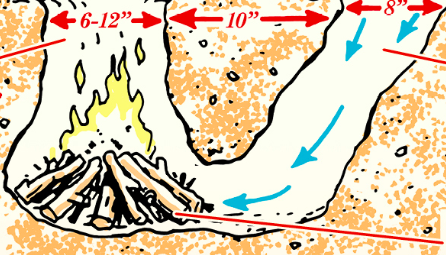The Soothing Power of ASMR on Long Flights
Two hours into a red-eye flight from Singapore to Sydney, I find myself on the verge of losing my sanity. At a towering height of 6-foot-3, my tall frame is crammed into a seat that seems barely big enough for a toddler. To my right, an elderly gentleman is snoring loudly, reminiscent of a chainsaw in action, while the air is filled with the pungent aroma of a half-digested tuna fish sandwich that he must have enjoyed earlier. This situation brings to mind the famous quote by French philosopher Jean-Paul Sartre: 'Hell is other people.' However, I suspect Sartre never had to endure the trials of the middle seat in economy class.
Feeling deeply exhausted and slightly nauseous, I instinctively reach for a familiar YouTube video that I have turned to countless times in similar predicaments. As I switch from tuning out the chaos to tuning in, the screen lights up, and a soothing voice greets me with, 'Hi there, Im Doctor Webber, and Ill be doing your eye test today.'
For the next ten minutesthough I end up playing it on repeatthis calming female voice guides me through an ophthalmology exam with a soft, whispering tone. Waves of goosebumps wash over me as she asks about my familys history with glaucoma and gently commands me to 'follow the light with your eyes.' Her precise words fade into the background, but the comfort I derive from her presence is undeniable. Once again, my sanity is salvaged by the tranquil influence of ASMR.
It appears that I am not alone in seeking solace in ASMR during the often-dreadful experience of air travel. Recent surveys indicate that about one in five travelers rely on audiovisual content designed to elicit an autonomous sensory meridian responsea low-grade euphoric sensation often referred to as tinglesto help manage the stress associated with overbooked flights, unruly fellow passengers, lost luggage, and the absurdly cramped seating arrangements characteristic of modern airlines. My personal video of choice boasts over half a million views, while content that combines ASMR with the soothing sounds of air travel, such as gently whirring engines and a friendly cockpit voice, has garnered millions of views collectively.
In recent years, airlines have embraced the ASMR trend as part of their customer service offerings. JetBlue, for instance, has launched AirSMR, a nine-minute audio experience designed to replicate what the narrator describes as 'the calming sounds of the airport.' This includes the soft rolling of suitcases and the gentle slurping of beverages through straws. Meanwhile, Delta Airlines recognized the growing popularity of ASMR among millennial and Gen Z passengers, responding with a 13-hour ASMR video posted on TikTok to celebrate the launch of its direct flight from Los Angeles to Auckland, New Zealand. While the airlines may not be able to guarantee timely arrivals at your destination, they are certainly willing to provide a dose of auditory calm as you wait on the tarmac.
One enthusiastic YouTube commenter expressed their appreciation, stating, 'Ive been chasing ambient noise similar to that of being in the air. This is heaven on earth to me.'
Some of the most intricately produced ASMR videos can be found on the Whispering Wings ASMR channel on YouTube. Many of these videos are designed to simulate actual flight paths from a passengers viewpoint, complete with audio and hyper-realistic cabin visuals sourced from online flight simulators. Whispering Wings even records its own pilot announcements and integrates real-life air traffic control communications. The objective is to help travelers focus on the more serene sounds of flying, devoid of distractions such as crying babies and irate passengers. 'Ive never felt this at peace on a plane before,' remarked a viewer about a Whispering Wings video documenting an eight-hour journey from Toronto to Frankfurt, Germany.
Despite the growing popularity of ASMR among frequent flyers, the peculiar nature of the phenomenon has kept it from achieving complete mainstream acceptance. 'I find its still kept quite hush-hush,' shares Sasha Mukerjea, an events marketer and avid traveler who uses ASMR to soothe her nerves during flights. 'Some people find the phenomenon baffling.'
For me, the experience of ASMR 'tingles' dates back to my childhood. My family moved frequently before settling in Singapore, and I often sought out sources of white noise to help me relax. The advent of ASMR videos turned into a godsend, and I began consuming them like one would take aspirin for a headache.
The specific ASMR 'triggers' that individuals respond to can be as varied as their culinary preferences. A sound that might repulse one personsuch as someone biting into a picklemay induce waves of pleasurable chills in another. Although the term ASMR is relatively modern, researchers suggest that the response itself has existed for centuries. When we listen to soothing sounds, our brains release dopamine and oxytocin, commonly known as the love hormone, resulting in euphoric sensations often referred to as 'braingasms.'
'ASMR can be very beneficial for reducing the stress associated with traveling,' explains Craig Richard, a professor of biopharmaceutical sciences at Shenandoah University, who has collaborated with JetBlue on the airline's ASMR content. However, he notes that further research is necessary to better understand which types of content are most effective for passengers, as the increased pressure from high altitudes can diminish the bodys receptivity to ASMR.
ASMR videos are just one of the ways to leverage the calming sounds of air travel to alleviate stress. Personally, Ive found that tuning into even the briefest triggers, such as the ding of the 'fasten seatbelts' sign, can help induce a state of relaxation, lower my heart rate, and create a comforting atmosphere. Richard elaborates that these short sounds, when connected to warm memories, may trigger a Pavlovian response, evoking ASMR by reminding one of pleasant travel experiences.
'Instead of getting lost in the chaos, I leaned into the rhythmic undercurrent,' recalls one ASMR devotee.
I distinctly remember trying a DIY version of ASMR during a flight to London. It was my first trip to Europe since the pandemic, and the indignities of modern travel felt like a minor inconvenience compared to the vacation I had been longing for. During the initial hours of the flight, everything was going smoothly. However, three rows ahead, a baby erupted into wails. My iPhone had run out of battery, leaving me unable to access my favorite ASMR video. In an effort to block out the noise, I turned up the volume on the in-flight movie, "Casino Royale." Yet, not even the action-packed adventures of 007 could drown out the relentless cries.
Then, I noticed the two passengers to my right speaking softly and slowly in a language I did not recognize. By focusing on their gentle voices, I managed to regain my composure.
Mukerjea, the events marketer who also relies on ASMR, shares a similar story. When severe weather extended her layover in New Delhi at one of the worlds busiest airports, she felt overwhelmed by the 'blistering fluorescence and relentless tide of people.' To cope, she began to concentrate on sounds that brought her comfort. 'Instead of getting lost in the chaos, I leaned into the rhythmic undercurrent,' she reflects. Listening to the 'murmur of voices and the soft rolling of suitcases over tiled floors,' she found relief from yet another travel nightmare.
Once airborne, Mukerjea prefers what the ASMR community refers to as 'unintentional' videosthose not explicitly labeled as ASMR. 'I steer clear of overly polished ASMR videos and gravitate towards something more authentic: walking tours through tranquil villages, the crunch of gravel underfoot, and the sounds of wind rustling through harvest fields,' she explains. 'These natural sounds transport me beyond the confines of the cabin, lessening the feeling of being trapped.'
As with every quirky subculture, ASMR enthusiasts find joy in discovering fellow travelers. 'Every time someone learns about ASMR and comments on one of my videos, it's an intense relief to connect with others who 'get it',' shares Ilse Blansert, whose YouTube channel has attracted millions of views. 'It truly feels like it unites us, as we share this profoundly human experience in common.'
My own relationship with ASMR has enriched not only my flights but also my overall travel experiences. My ability to recognize triggers in everyday life has become a valuable tool for managing stress as I navigate new places and adventures. It has also made me a more considerate travel companion for my wife, who possesses a much more laid-back demeanor than I do.
In 2023, our honeymoon in Japan coincided with a brutal heat wave. Despite being blasted by hundred-degree temperatures, we boldlysome might say foolishlydecided to embark on a three-hour midday trek through Kyoto's serene Arashiyama Bamboo Forest. The air was stifling and humid, making the heat even more unbearable within the park than in the city. I found myself drenched in sweat and bathed in green light as the sun pierced through the leaves, wishing desperately for a cooler environment.
Starving, cranky, and seconds away from snapping at my new bride, I recognized that this was not an ideal beginning to our honeymoon. In a moment of desperation, I turned to ASMR. I shifted my focus from the sound of my heavy, irritated breathing to the wall of sound that had been in the background all along: the steady chorus of cicadas. Almost magically, a wave of goosebumps washed over me, along with a renewed sense of gratitude for the music of the present moment. I paused, appreciating for the first time the towering bamboo forest above us that reached heights of 65 feet.
'Why have you stopped, hon?' my wife asked, curiosity in her voice. 'Tired?'
'No,' I replied. 'Just tingling.'
Written by Daniel Seifert, a freelance writer based in Singapore.

















